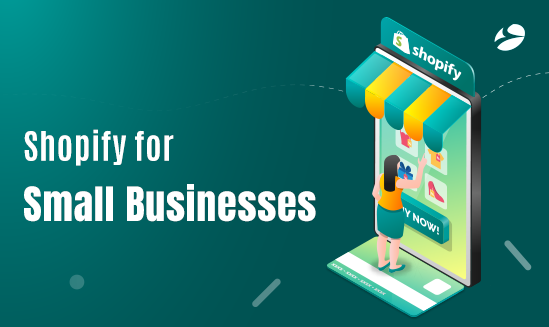Small businesses must continually innovate to stand out from the competition. In 2025, Shopify will remain one of the most popular platforms for launching and scaling online stores. Yet, simply having an attractive store isn’t enough to drive sales. Small businesses need a comprehensive marketing strategy tailored to today’s digital landscape to thrive. Below, we explore 10 top Shopify marketing strategies to help small businesses boost sales, improve customer engagement, and secure a competitive edge in 2025.
1. Embrace Retargeting and Paid Advertising
Even the most well-designed Shopify store can lose potential customers at the checkout. Retargeting ads are designed to recapture these lost opportunities by showing tailored ads to visitors who have left your site without converting. By integrating small tracking pixels on your website, you can target those users with customized offers as they browse other sites or social media platforms.
Paid advertising also remains a vital tool. Platforms such as Google Ads and Facebook Ads let you target specific keywords and demographics, ensuring that your message reaches the right audience. Small businesses can start with modest budgets and scale their campaigns as organic sales increase. These targeted efforts not only help recapture lost visitors but also drive new traffic to your store.
2. Leverage Email Marketing and Automation
For many small businesses, building a loyal customer base begins with a robust email marketing strategy. Email marketing is renowned for its high return on investment and can be especially powerful when integrated with automation tools. Platforms like Shopify Email and Klaviyo allow you to segment your audience, send personalized messages, and set up automated drip campaigns that nurture leads over time.
Begin by offering incentives, such as exclusive discounts or valuable content, to encourage visitors to subscribe to your mailing list. Once you’ve built your list, use automation to send welcome emails, promotional offers, and reminders about abandoned carts. This approach keeps your brand top-of-mind and helps transform one-time buyers into repeat customers.
3. Optimize Your Social Media Presence and Influencer Collaborations
Social media continues to be a game changer for small businesses looking to drive traffic and build brand awareness. While organic reach is essential, pairing your efforts with targeted influencer collaborations can significantly amplify your message. Micro‑influencers, in particular, are highly effective for small businesses because they tend to have niche, highly engaged audiences.
Focus on platforms where your target customers are most active. Whether it’s Instagram, TikTok, or Facebook, consistent posting, authentic storytelling, and genuine engagement can build trust and drive conversions. In addition, consider using social media ads to complement organic efforts—targeted ads can push potential customers directly to your Shopify store.
4. Invest in Content Marketing and SEO
High-quality content is the backbone of effective digital marketing. For small businesses on Shopify, creating valuable blog posts, how-to guides, and engaging videos not only informs your customers but also boosts your search engine rankings. SEO—search engine optimization—ensures that your content is discoverable by potential buyers actively searching for products like yours.
Optimize your website by incorporating relevant keywords into product descriptions, meta tags, and blog posts. A well-structured website with fast loading times and mobile-friendly design further contributes to higher rankings and a better user experience. Regularly updating your content and building backlinks will help drive organic traffic to your store over time.
5. Utilize Onsite Popups, Notifications, and Loyalty Programs
Capturing your visitors’ attention at the right moment is crucial. Onsite popups and notifications can be strategically deployed to offer discounts, announce flash sales, or simply encourage newsletter signups. These interactive elements serve as direct calls to action that help convert casual browsers into paying customers.
Once you’ve captured a customer’s interest, nurture their loyalty with rewards programs. Offering loyalty points, exclusive discounts, or early access to new products can incentivize repeat purchases and enhance customer retention. Shopify offers a variety of apps that integrate these features seamlessly into your store, making it easier to manage and track customer engagement.
Also read: What Is Amazon Prime And Why Would You Subscribe To It?
6. Harness AI and Data for Hyper-Personalization
The integration of artificial intelligence (AI) is rapidly transforming digital marketing. In 2025, small businesses can harness AI tools to analyze customer data, predict shopping behaviors, and tailor marketing messages on an individual basis. AI-driven platforms such as Klaviyo and Shopify Magic enable hyper-personalization, ensuring that every email, ad, or website recommendation is uniquely tailored to the customer’s preferences.
For example, AI can help optimize your product recommendations on the homepage or dynamically adjust the content of an email campaign based on past purchasing behavior. This level of personalization not only improves the customer experience but also increases conversion rates and overall sales.
7. Streamline Your Marketing with Automation Tools
Marketing automation saves valuable time and resources by streamlining repetitive tasks. Tools like HubSpot, Pardot, and even native Shopify integrations can help you schedule social media posts, manage email campaigns, and track customer interactions automatically. Automation not only enhances efficiency but also provides you with critical data insights to refine your strategy.
By setting up automated workflows—such as abandoned cart reminders or post-purchase follow-up emails—you ensure that your marketing efforts run smoothly around the clock, even when you’re not actively managing them. This consistent engagement is key to driving conversions and nurturing customer loyalty.
8. Focus on Local and Community Marketing
For small businesses, building a strong local presence can be just as important as online efforts. Local SEO tactics, community events, and partnerships with nearby businesses can help you connect with your immediate audience. Leverage customer reviews and testimonials from your local community to build credibility and trust.
Consider hosting in-store events or workshops, and use your Shopify store to promote these activities online. This blended approach not only boosts local sales but also creates a loyal customer base that feels connected to your brand’s community.
9. Monitor, Measure, and Adapt
A successful marketing strategy is never static. Constant monitoring of key performance indicators (KPIs) such as conversion rates, customer acquisition costs, and average order values is critical. Use Shopify’s analytics tools and third-party apps to track your campaigns’ performance in real time.
Regularly reviewing your data allows you to identify which strategies are working and which need adjustment. Whether it’s tweaking your email content, adjusting ad spend, or experimenting with different popup designs, a willingness to adapt based on data is essential for sustained growth.
10. Stay Ahead with Continuous Learning
The digital marketing landscape evolves quickly. As new technologies and trends emerge, small businesses must stay informed to maintain a competitive edge. Dedicate time to learning about the latest marketing innovations, whether it’s attending webinars, reading industry blogs, or networking with other entrepreneurs.
This continuous learning mindset not only helps you adopt cutting-edge strategies but also fosters innovation within your own marketing efforts. Being proactive about market trends ensures that you’re always one step ahead of competitors and ready to seize new opportunities as they arise.
Conclusion
In 2025, small businesses on Shopify have a wealth of marketing tools and strategies at their disposal. By embracing retargeting ads, leveraging email automation, optimizing social media efforts, investing in content marketing and SEO, and harnessing the power of AI for hyper-personalization, you can create a robust strategy that drives sales and builds lasting customer relationships.
Remember that the most successful marketing strategies integrate multiple channels—ensuring that every touchpoint, from a social media ad to a personalized email, works together to enhance the customer experience. Monitor your results, stay agile, and continuously educate yourself on new trends. With dedication and the right approach, your Shopify store can not only survive but thrive in the competitive e‑commerce landscape of 2025.
Small businesses have unique challenges, but with these targeted strategies, you can transform challenges into opportunities for growth. Start implementing these tactics today and watch your sales soar.
By integrating innovative digital marketing strategies with the inherent strengths of the Shopify platform, small businesses are well-positioned to maximize their sales and grow their brand in 2025.

